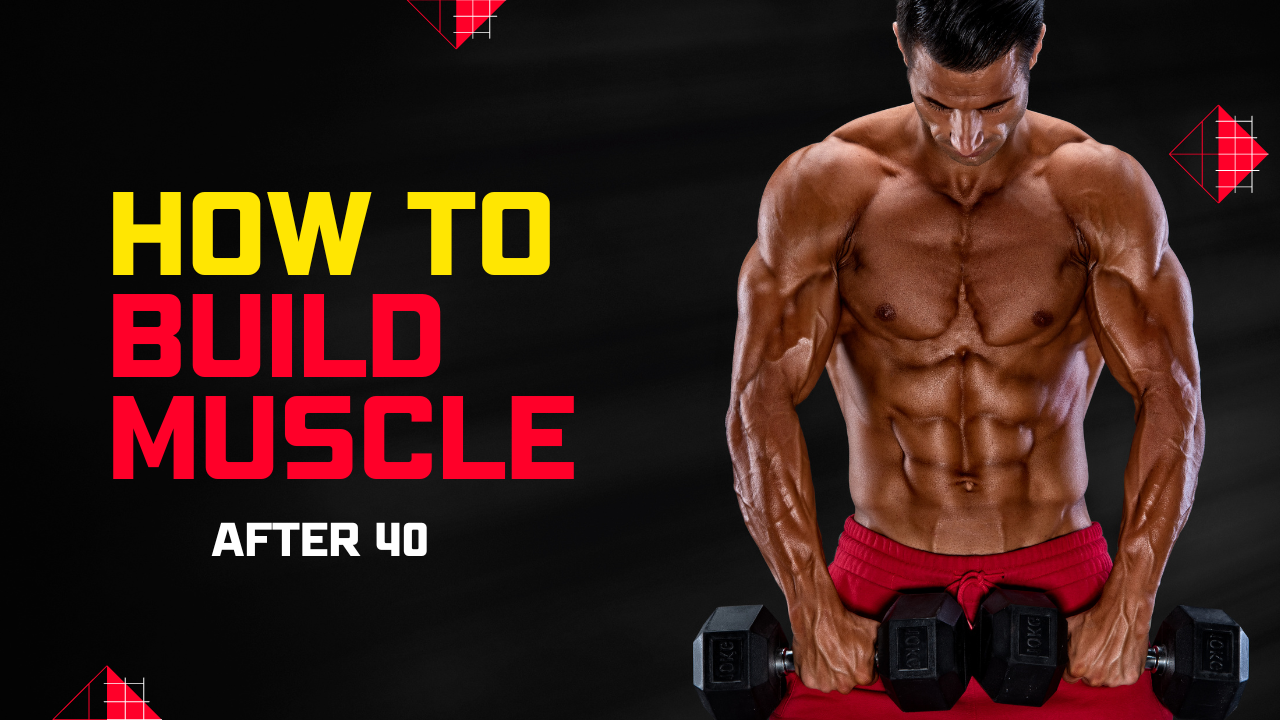
IN THIS POST
Uh-oh, you’ve just hit the big 4-0.
Surely, building muscle will be harder than climbing Mount Everest after turning a completely random number.
Hopefully, you can sense my sarcasm because life after 40 does not resign you to a rocking chair for unlimited snooze sessions and weekly bingo nights.
Know what I saw online?
A woman who started lifting weights and building muscle for the first time at, get this…
80 YEARS OLD!!
Point being, you can build muscle at ANY age (The same rules apply, no matter how old you are).
In this article, you’ll learn exactly what to do from a nutrition, workout, and recovery perspective to add jaw-dropping muscle to your frame.
But first, let’s talk about why having muscle is so beneficial in the first place.
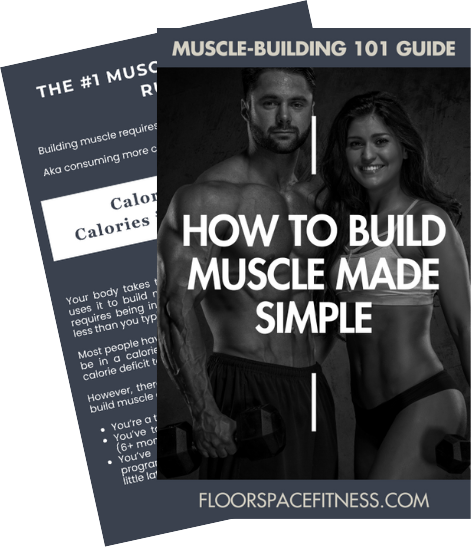
Key benefits of having muscle
Picture your ideal physique.
It’s the one that has you flexing and posing in the mirror in almost disbelief that the body you have is actually yours.
Are you envisioning a physique that’s toned, defined, and has shape?
If so, you’ll need muscle to make your dream body a reality.
But that’s not all muscle is good for.
Something you may not think about when it comes to muscle is how functional it is.
Muscle allows you to do simple daily tasks like squatting down to pick up a box, placing items above your head, or bringing groceries in from the car.
If you’re like me, you’d almost rather sacrifice one of your arms than make multiple trips bringing groceries in. 😂
Or, let’s say you have kids.
Picking them up to play, holding them in your arms, and dragging around their diaper and toy bags requires muscle too.
Strength training (which means muscle) also improves bone density.
Ladies, this one is especially important for you.
Unfortunately, you have a higher risk of developing osteoporosis than men.
Aaaaaand last but certainly not least…
Muscle enables you to maintain your independence as you age and stay active.
Remaining physically active later on in life will help keep the weight you lose off and preserve the hard-earned body goals you will have reached.
In short, muscle allows you to enjoy a healthier, happier life.
The golden rule of building muscle
To build muscle, you have to be in what’s called a “calorie surplus.”
This is when you’re consuming more calories than you burn.
AKA calories in > calories out.
It’s the opposite of a calorie deficit, which you need if your goal is fat loss.
Typically, you have to choose one or the other; either enter into a calorie surplus to build muscle or be in a calorie deficit to lose fat.
But there are actually some people who can both lose fat AND build muscle at the same time.
Read this post to see if you’re one of them.
There’s something I should point out about being in a surplus.
It does come with a little bit of body fat gain (this is just part of doing business if you want to build muscle).
Don’t worry though!
If you follow what I’m about to share with you in the rest of this post you’ll keep fat gain to an absolute minimum.
Related: Am I gaining muscle or putting on fat?
How to eat for muscle growth
You know what being in a surplus means but how many calories is that exactly?
I’ll show you how to figure that out in just two quick steps:
Step #1: Find your TDEE (or maintenance calories) using this calculator.
Just input the info it asks for and click “Calculate!”
FYI, your TDEE is the number of calories you’d need to eat to maintain your current weight.
Step #2: Add 10% to your TDEE number to get your surplus calories.
For example, let’s say your TDEE comes out to 2,000 calories.
2,000 x 1.10 = 2,200 calories for your surplus.
Just knowing your overall calories isn’t enough.
You need a way to keep track to ensure you’re actually eating that much on a daily basis.
To do that, I’d recommend counting calories.
The article I linked to in the line right above this is written from a weight loss perspective but the same rules apply for being in a surplus and building muscle!
Not only do your overall calories matter but what makes up those calories matters as well.
Protein, protein, protein (Did I say protein?)

Within your overall calories, you NEED to make sure you’re consuming enough protein.
It’s the one macronutrient directly responsible for muscle growth.
You tear your muscles down during your workouts and adequate protein intake builds them back up bigger and stronger than before.
0.7g-1g per pound of your bodyweight in protein daily is ideal.
The 80/20 diet rule
A lot of people struggle with having an all-or-nothing relationship when it comes to food.
They label certain foods which they can eat as “good” and other foods to avoid as “bad.”
Is that you?
Do you end up eating “clean” for a little while but eventually always binging on all the foods you deprived yourself of?
Building muscle and achieving your fitness goals doesn’t have to mean overly restricting yourself or making extreme sacrifices.
In fact, I’d argue you’ll see better results by having some flexibility with your nutrition.
Cue the 80/20 rule, which is this:
You simply get 80% of your calories from nutrient-dense whole foods such as chicken breast, turkey breast, sweet potatoes, fruits, veggies, etc.
And then the other 20% of your calories can come from whatever foods you like, be that pizza, burgers, wings, fries, cookies, milkshakes, candy canes, literally…WHATEVER.
What makes the 80/20 rule so good is that you’ll learn how to make healthier food choices but at the same time still have the freedom to enjoy all your favorite “fun” foods.
That way of eating is sustainable and sustainability = results that actually last.
Strength training is a muscle-building necessity
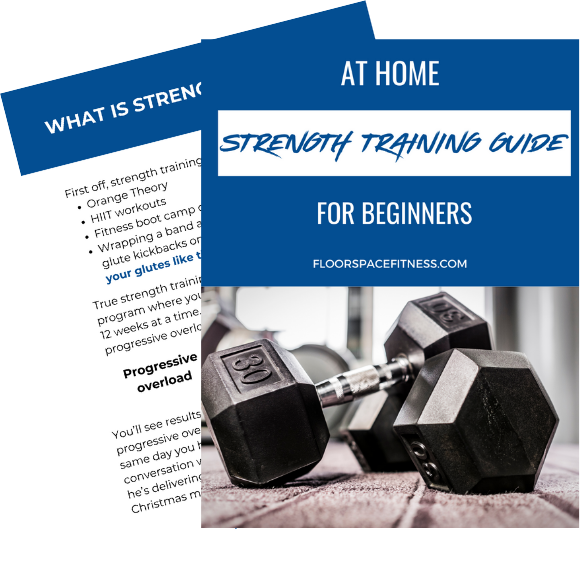
You may have an idea of what strength training is in your head but just so we’re clear, it isn’t this:
- HIIT
- Orange Theory
- Fitness boot camp classes
- Pilates
- Banded glute kickbacks on the StairMaster (If you’re serious about growing your glutes, read this post)
Here’s what strength training ACTUALLY is:
Being on a structured program where you’re doing the same batch of workouts 4-12 weeks at a time.
Rather than scour the internet or social media searching for a workout program to follow, I have two totally free ones already made for you.
The first one is my 12-week dumbbell workout program and the second one is my 12-week gym workout plan.
If you want everything all laid out for you–I’m talking the exact exercises to do and the number of sets/reps to do them for–make sure you snag one of those workout programs (if not both)!
Again, they’re 100% free so what do you have to lose?
No matter the program, the muscle-building bus starts and stops with progressive overload.
It’s the act of gradually increasing the amount of weight you lift over time.
Progressively lifting heavier and heavier weights provides your body with the stimulus it needs to build muscle.
What about cardio?
You’re probably sitting there wondering, “Well, what about cardio?”
The only cardio I’d say you need is your daily 7.5K-10K steps (Yes, walking counts as cardio).
It’s pretty much just for your health because cardio doesn’t contribute to building muscle and you don’t want cardio workouts to take away from your strength training sessions.
By the way, research shows walking significantly decrease your risk of dying from essentially any disease or condition.
Workout recovery

Recovery matters…
A LOT.
The muscle growth magic happens between workouts while you’re resting and recovering, not during your workouts.
So if your recovery sucks, well, you won’t make all the gains you could be.
Here’s what a solid recovery plan looks like:
- Having planned rest days (3 or 4 a week)
- 7-9 hours of sleep each night: Your body produces human growth hormone (HGH) while sleeping, which is a hormone key to muscle growth. You’ll also have more energy for your workouts. If you’re setting personal bests in the gym and lifting heavy weights that’ll translate to building more muscle. 7-9 hours is ideal, sure. But I get it, that may not be realistic for you. Just know half an hour to an hour more can still make a difference.
- Taking advantage of deload weeks: Every 4-6 weeks, cut back on how much weight you lift and/or training volume (how many sets and reps you do). This aids in recovery by giving your body and mind a break. You can’t go hard 24/7, 365 and expect to see results. All that does is break your body down and inhibit recovery.
- Making sure to consume enough of our dear friend, protein, to help repair and grow your muscles.
How to build muscle after 40 wrap-up
40 is the new 20!
No, seriously.
You can absolutely build muscle after 40 years old.
Remember the woman I mentioned earlier?
She didn’t start strength training and building muscle until she was 80 years old!
It’s never too late, and definitely not at 40.
You can and should prioritize building muscle, not just because it’ll help you look good naked. 😉
But for all the benefits I laid out at the beginning of this article.
It improves your quality of life, enhances bone density, and allows you to maintain your independence as you age, which means having the strength to stay active later on in life and maintain the results you achieve.
Look, that’s not to say building muscle is all rainbows and unicorns.
You’ll need patience because building muscle is a slow process.
Related: How long does it take to build muscle?
BUT if you’re consistent about applying everything we’ve talked about, you WILL build muscle and see great results.

What's up?
I’m Chad, I’m happy you’re here! I’m a certified personal trainer and my goal is to help you form practical, sustainable habits that lead to lifelong fitness results. If you want to lose fat, build muscle, and live a healthier, happier life then you’re right where you need to be. 💪🏾
Free resources
⬇⬇⬇


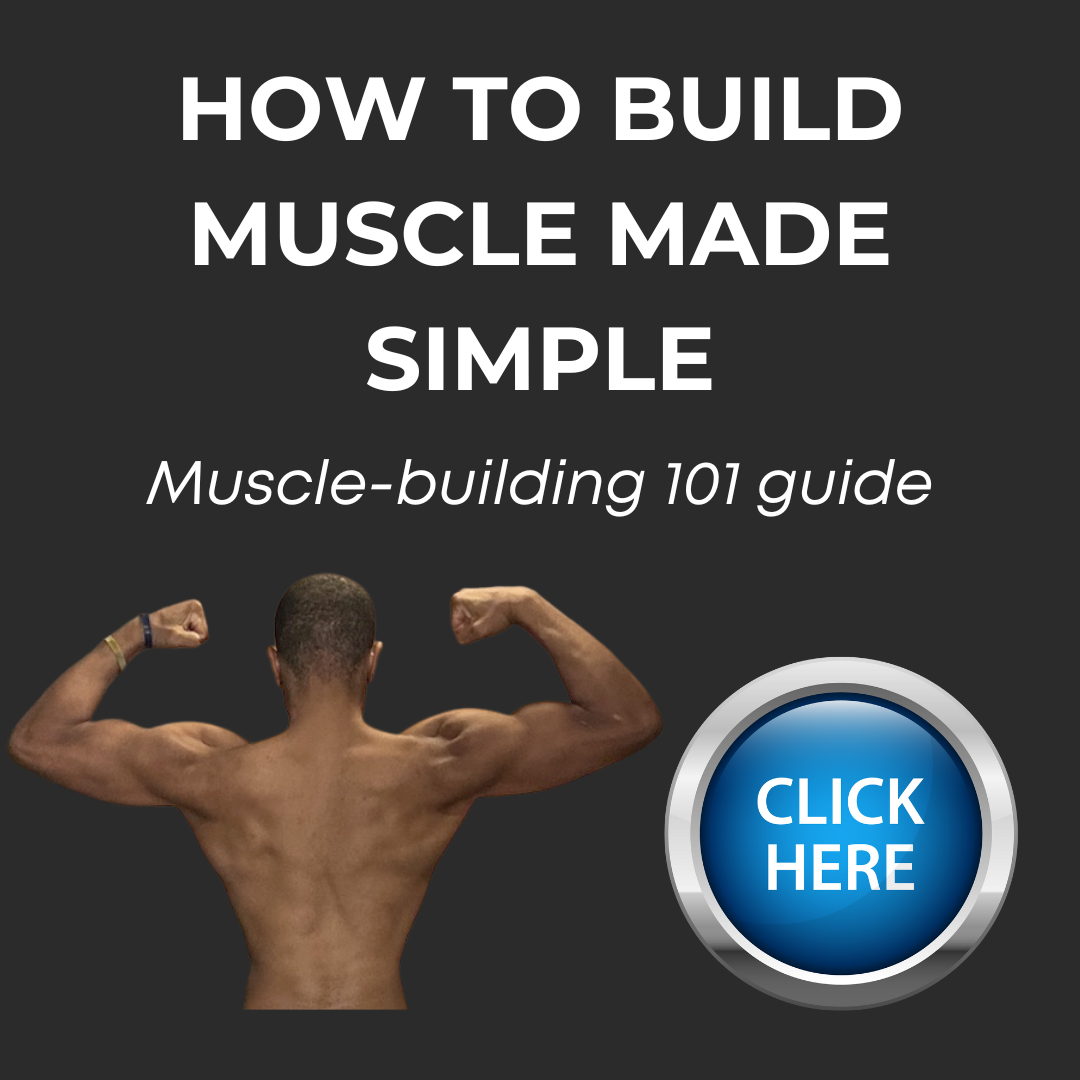



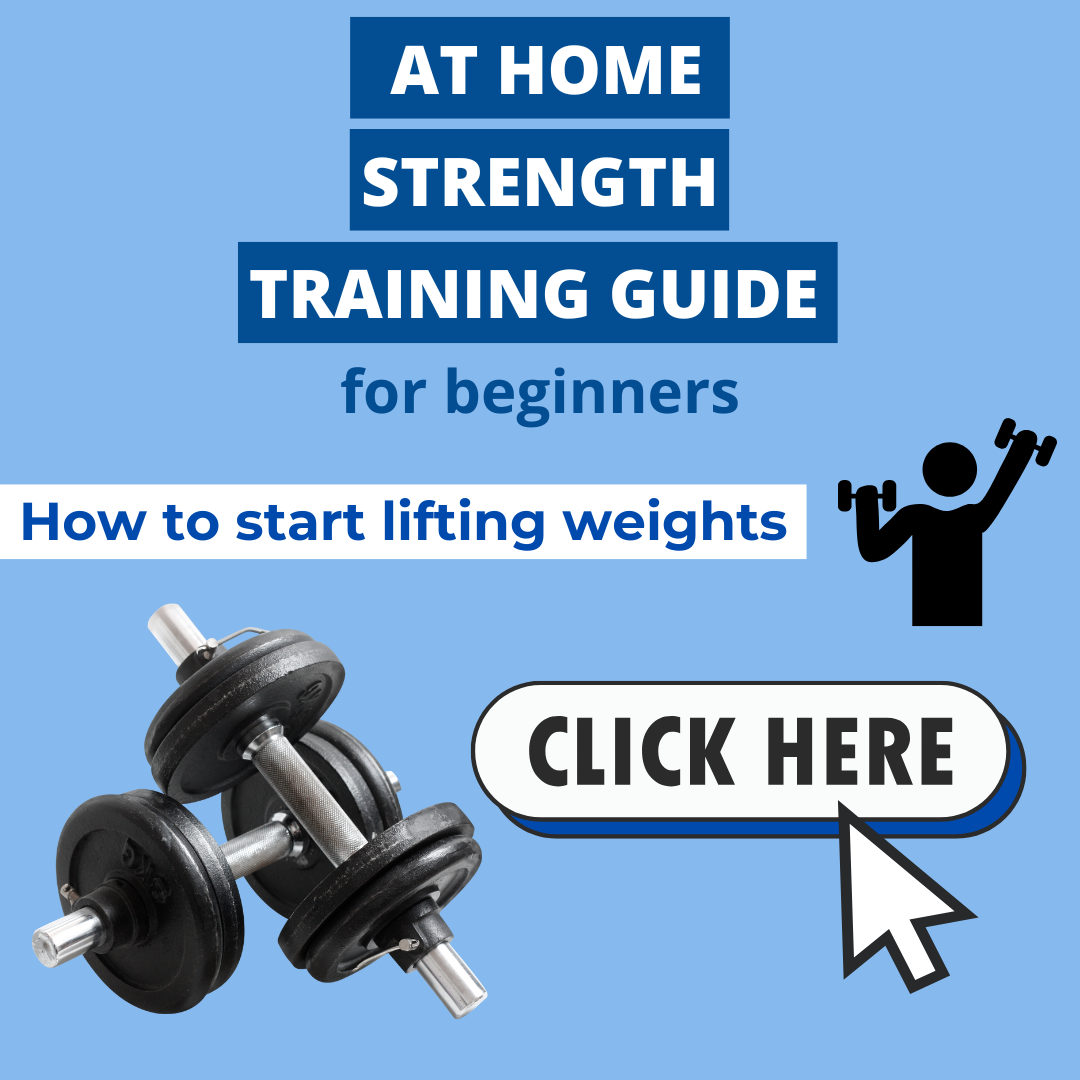

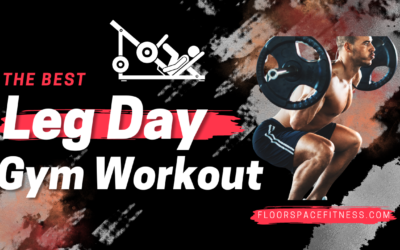

0 Comments